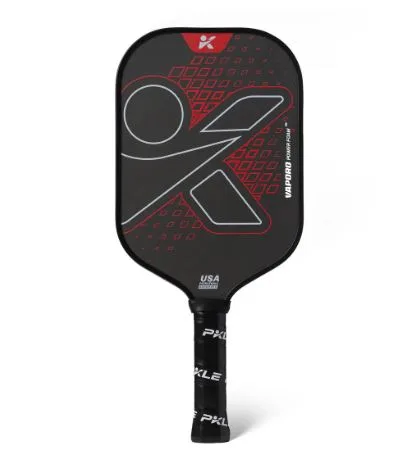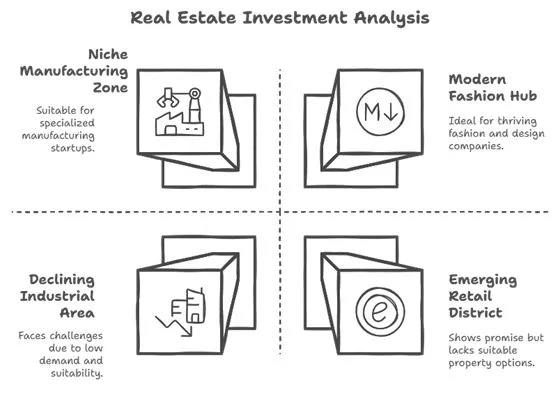Pro Pickleball Players Choose Their Paddles
Watch any professional pickleball match and you’ll notice something fascinating. When thousands of dollars in prize money are on the line, every player trusts their paddle like a surgeon trusts their scalpel. But here’s what most people don’t realize: the paddle choice isn’t about marketing hype or brand loyalty. It’s a calculated decision based on playing style, physical attributes, and strategic approach to the game.
To understand how pros actually select their equipment, we consulted with experts at PicklePro Shop, who work daily with both recreational players and competitive athletes on paddle selection. What they shared reveals a selection process that’s far more methodical than most people imagine.
The Framework: Matching Paddle to Playing Style
Professional players don’t start by asking “which paddle is best?” They start by asking “what does my game need?”
According to the team at PicklePro Shop, pros typically fall into three categories: power players, control specialists, and all-court hybrids. Each category demands completely different equipment characteristics.
Power players need paddles that maximize their ability to finish points quickly. These athletes gravitate toward thinner cores (typically 13mm to 14mm) that offer more responsive pop and less dwell time. The elongated paddle shape gives them extra reach and leverage for aggressive serves and drives. Think of players who dominate from the baseline and look to end rallies with pace rather than patience.
Control specialists take the opposite approach. They prefer thicker cores (16mm) that provide softer feel and more dwell time on the paddle face. This extra millisecond of contact allows for better touch on dinks, drops, and resets. The widebody or standard shape often works better for these players because it offers a larger sweet spot for consistency on placement shots.
All-court players land somewhere in the middle, typically choosing 14mm or 15mm cores that balance power and control. These versatile athletes need equipment that won’t betray them whether they’re attacking from the baseline or defending at the kitchen line.
The Science Behind Core Thickness
Core thickness might sound like a minor detail, but it fundamentally changes how a paddle performs. The experts at PicklePro Shop explained that this is often the first specification pros lock in when designing signature paddles.
A thinner core (13mm or less) compresses less on impact, creating a trampoline effect that sends the ball back with more velocity. The trade-off is reduced control and a smaller margin for error on touch shots. Players who can handle this volatility get rewarded with devastating power.
Thicker cores (16mm or more) compress more on impact, absorbing energy and creating a softer, more controlled response. This gives players more time to manipulate the ball and execute precise placement. The downside is less natural power, which means these players need to generate pace through technique rather than relying on the paddle to do it for them.
Professional players understand these trade-offs intuitively. They’ve hit thousands of balls with different core thicknesses and know exactly what their game demands.
Face Material: The Spin Revolution
The move to raw carbon fiber faces represents one of the biggest changes in professional pickleball over the past two years. The textured surface grips the ball differently than traditional smooth faces, enabling spin generation that would have been impossible just a few years ago.
Pros who rely on heavy topspin to create angles and dip the ball at opponents’ feet almost universally choose raw carbon fiber. The surface technology allows them to brush the ball more aggressively without losing control. This is especially valuable on serves, where extra spin can pull the ball down into the service box while still maintaining pace.
Some players still prefer composite or fiberglass faces for their softer feel and forgiving nature. These materials don’t generate quite as much spin, but they offer better touch and are generally more comfortable for players with arm or shoulder issues. The choice often comes down to whether a player’s game depends more on spin or feel.
Weight and Balance: Personal Preference Meets Physics
Walk into any professional locker room and you’ll find players customizing their paddles with lead tape, different grips, and various modifications. Weight and balance aren’t one-size-fits-all specifications. They’re deeply personal choices that can make or break a player’s comfort with a paddle.
Heavier paddles (8.4 ounces and above) provide more stability and plow-through on contact. When a player with a heavy paddle meets the ball, there’s less deflection and more predictable ball flight. This stability is especially valuable when blocking hard drives or countering pace. The downside is slower hand speed and potential fatigue during long matches.
Lighter paddles (7.5 to 8.0 ounces) allow for quicker reactions and faster hand battles at the net. Players with exceptional hand-eye coordination can take advantage of this maneuverability to catch opponents off guard with quick redirects and flicks. The trade-off is less stability and more difficulty controlling hard-hit balls.
Balance point matters too. A head-heavy paddle generates more power through leverage but feels less maneuverable. A handle-heavy paddle whips through the air faster but lacks punch. Most pros experiment extensively to find the exact weight distribution that matches their swing mechanics.
Handle Length: The Two-Handed Backhand Revolution
One specification that has become nearly universal among top pros is extended handle length. Modern professional pickleball features two-handed backhands as a standard weapon, and players need handles of 5.5 inches or longer to execute these shots comfortably.
The longer handle provides better leverage on groundstrokes and allows players to generate more racket head speed with less effort. It also enables the two-handed backhand, which has become essential for handling pace and creating angles on that side of the court.
Some players still prefer shorter handles (around 5 inches) because they prioritize having more paddle face area. This creates a larger sweet spot and more forgiveness on off-center hits. It’s another example of how playing style dictates equipment choice.
What the Pros Are Actually Using
To illustrate these principles in action, let’s look at what some top professionals chose for their signature paddles and why those choices make sense for their games.
Ben Johns plays with the JOOLA Perseus Pro IV 16mm. The elongated shape gives him reach, while the 16mm core provides the control he needs for his precision-based game. He customizes it with tungsten tape for added stability and brings the weight up to around 8.4 ounces. Every aspect of this setup matches his all-court style that emphasizes consistency and strategic shot-making.
Anna Leigh Waters uses the Paddletek Bantam ALW-C, available in both 12.7mm and 14.3mm versions. The lighter weight (7.5 to 7.8 ounces) and low swing weight enable her signature fast hands and aggressive net play. The raw carbon fiber face delivers the spin she needs to create sharp angles. This paddle was literally built around her attacking style.
Tyson McGuffin trusts the JOOLA Magnus 3S, known as one of the most powerful paddles on the market. The specs reflect his baseline-dominant game that relies on finishing points with pace. Everything about this paddle prioritizes power over finesse.
These aren’t random choices. Each paddle represents a deliberate alignment between player strengths and equipment characteristics.
The Technology Driving Innovation
Professional demands have pushed manufacturers to develop technologies that would have seemed impossible a few years ago. Thermoformed construction with foam cores offers durability that previous generations of paddles couldn’t match. Carbon Friction Surface technology maximizes spin potential. Propulsion Core designs balance power and control in ways that traditional polymer honeycomb cores never could.
According to PicklePro Shop’s professional paddle experts, these innovations aren’t just marketing buzzwords. They represent genuine advances in paddle performance that competitive players can feel on every shot.
The certification landscape has also evolved. Dual approval from both USAP and UPA-A means paddles can be used in any tournament format. Some manufacturers have even started embedding NFC chips in paddle handles for authentication and warranty registration.
Customization: The Final Step
Most pros don’t use their paddles straight out of the box. They customize extensively to dial in the exact feel they want.
Lead tape is the most common modification. Adding weight to specific areas of the paddle changes both the static weight and the swing weight, allowing players to fine-tune performance. Tape at the top of the paddle adds power but slows down hand speed. Tape on the sides increases stability without dramatically affecting swing weight.
Grip changes are nearly universal. Most players immediately replace the stock grip with their preferred thickness and tackiness. Some wrap overgrips to increase handle diameter. Others prefer thin grips for better feel. The right grip improves comfort and prevents blisters during long tournament days.
Edge guard tape protects against chips and dings while also slightly altering the paddle’s aerodynamics. String dampeners, while less common, can reduce vibration for players with arm sensitivity.
What This Means for Your Game
The most valuable insight from understanding how pros choose paddles isn’t that you should buy their exact setup. It’s recognizing that equipment choice should flow from playing style, not the other way around.
If you’re an aggressive player who loves to attack, you need a paddle that rewards that instinct with power and spin. If you’re more methodical and patient, you need equipment that gives you the control to execute a strategic gameplan. If you’re still developing your style, an all-court paddle that doesn’t force you into one approach makes sense.
The good news is that the same paddles pros use are available to recreational players. When you browse options at PicklePro Shop or any reputable retailer, you’re seeing the actual equipment being used to win championships, not watered-down consumer versions.
Making an Informed Decision
Start by honestly assessing your playing style. Are you a power player, a control specialist, or somewhere in between? Do you prefer fast hands at the net or baseline consistency? How important is spin to your game?
Then map those characteristics to paddle specifications. Power players should test thinner cores and elongated shapes. Control players should try thicker cores and larger sweet spots. Everyone should consider the face material based on how much spin they want to generate.
Don’t get too caught up in what your favorite pro uses. They’ve developed their techniques over thousands of hours and can extract performance from equipment that might not suit your game. Focus instead on understanding why they chose those specifications and whether your game has similar needs.
Try before you buy when possible. Many retailers and clubs offer demo programs. Even hitting for 20 minutes with a paddle will tell you more than reading specs online. Pay attention to how it feels on dinks, drives, and serves. Trust your instincts about comfort and confidence.
The Bottom Line
Professional pickleball players choose their paddles through a systematic process that prioritizes playing style over hype. They understand the physics behind core thickness, face materials, weight distribution, and handle length. They customize extensively to dial in exactly what they need.
The selection process isn’t mysterious. It’s methodical. And now that you understand the framework pros use, you can apply the same principles to your own equipment choices.
There’s no universally “best” paddle. There’s only the best paddle for how you play the game. The pros figured that out long ago. Now it’s your turn.







